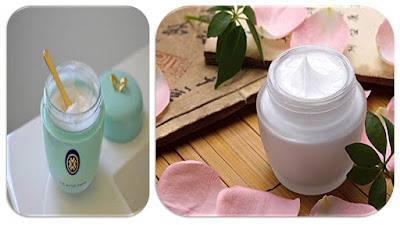Moisturizer:
This entry has been reviewed by the State Drug Administration.
Moisturizing cream is a kind of emulsifying cream, including O/W type, W/O type and W/O/W type, of which O/W type emulsifying cream occupies the main position. The oily ingredients contained in moisturizers are between vanishing creams and balsams. The content of oily ingredients is generally 10% to 70%, which can be formulated into various oil-water ratios within the respective ranges of the oil phase and the water phase. For various types of skin products, moisturizers use a wide range of raw materials, so there are many types of moisturizing products, and most skin creams belong to this category of products [1].
 |
| moisturizer |
Basic Information:
Moisturizer is a skin care product used to keep the skin moist and smooth. It is between weak oiliness and oiliness, so it is called neutral cream. The main ingredients are emollients, wetting agents, softeners, emulsifiers and deionized water, etc., which have better lubricity and better skin penetration. Its pH is between 4-6.5, which is very close to the pH of the skin. Long-term use of moisturizer can make the skin softer, full of tension, moisturized and smooth [2]. Adding the corresponding ingredients to the moisturizing cream can be made into cream skin care products such as nutrient cream, night cream, hand cream and so on.
Benefit:
Moisturizing cream is actually emulsified by oil and water that cannot be mixed with each other, and it also contains a variety of moisturizing nutrients. Due to their different proportions, moisturizing cream not only has the effects of moisturizing and preventing skin aging, but also has the effects of sunscreen, whitening, wrinkle removal, and acne. [3]
Moisturizers, glycerin and other emollients can absorb several times the moisture in the air, and can form a protective layer on the skin to prevent the volatilization of subcutaneous moisture. The long-lasting moisturizing water-in-oil formula is delicate and moisturizing, easy to absorb, and keep the skin moisturized and shiny at all times. Studies have found that emollients can imitate the natural skin barrier and form a lubricating film on the surface of the skin, which acts as a seal, delays the loss of epidermal moisture, reduces the production of epidermal hyperplasia and scales, and relieves the symptoms of itching caused by the skin. Skin allergies. , Enhance and repair the skin barrier function; in addition, it can also enhance the skin's penetration function [4].
Guide:
Wash your face first, use toner, and then apply moisturizer. Before applying the liquid foundation, you can use a good moisturizer as the base of the makeup primer. If you continue to apply makeup, your face will not dry up and your skin will look crystal clear [5]. Massage gently when applying to enhance the affinity of the moisturizer with the skin [2].
Main ingredients:
- The main ingredients are:
- Water: water
- Liquid paraffin: liquid paraffin
- Cera Microcristallina: microcrystalline wax, natural mineral wax.
- Glycerin: Glycerin
- Lanolin alcohol (Eucerit®): Lanolin alcohol, water-in-oil emulsifier.
- Paraffin wax: paraffin wax, mineral wax.
- Panthenol: Vitamin B5
- Decyl oleate; oleyl decanoic acid, synthetic ester.
- Octyldodecanol: Octyldodecanol, surfactant, thickener, strong irritation.
- Aluminum stearate: aluminum stearate
- Citric acid: Citric acid
- Magnesium Sulfate: Magnesium Sulfate
- Magnesium stearate: Magnesium stearate
- Perfume, limonene, geraniol, hydroxycitronellal, linalool, citronellol, benzyl benzoate, cinnamyl alcohol: fragrance
One of the most important ingredients is emollients. Emollients are substances that can provide an oily layer to the stratum corneum of the skin. It can prevent the loss of water in the stratum corneum, promote the return of water to the keratinocytes, and make the intercellular fissure disappear. It can also repair the epidermal barrier and inhibit inflammatory mediators. release. Commonly used emollients mainly include petrolatum, mineral oil, octyldodecanol, lanolin alcohol, etc. [4].
Precautions:
Use a moderate amount of moisturizer, especially in summer. Excessive use may clog pores, hinder the normal metabolism of the skin, and cause rashes, itching and other problems.
Frequently asked questions:
1. The more moisturizer you apply, the better?
Answer: Absorb as much moisturizer as possible according to the needs of the skin. Applying too much will not only waste, but also clog pores like an oil film on the face, causing acne and eye puffiness [6]. In short, because the skin's absorption capacity is limited, just use an appropriate amount of moisturizer.
2. Is there no need to use moisturizer for oily skin?
Answer: Oily skin can also feel dry, especially on the cheeks. Many women have "oily dehydrated skin", especially in the case of water shortage in air-conditioned rooms, they also need a suitable moisturizer. There are many refreshing moisturizing creams on the market, which are more suitable for oily skin [6].
Selection skills:
When buying a moisturizer, be sure to choose according to your skin condition. Oily skin is rougher and has more oil secretion, so you should choose a more refreshing water-based one, mainly paying attention to its moisturizing, bleaching and acne-removing functions; for dry skin, it is more suitable to choose products that can provide appropriate oil and moisturizing; middle-aged Women and elderly women should choose emulsions with anti-wrinkle, whitening and oily emulsions; when the skin is seasonal, different products should be selected according to the season. Moisturizing cream is ideal. In general, thick and moisturizing night creams or day creams are more suitable for dry or even ultra-dry skin, while refreshing varieties are more suitable for normal or oily skin. [3]





0 Comments